First time we had heard of Tolstoy, we right away thought about a colourful, funky and fresh-looking place (think vegan, young, trendy). The design of the 60s came to mind, when the society was reborn, vegetarianism exploded and colours were a part of a positive statement.
Overall, we wanted to create a place, where people can feel good. They can enjoy great food and do their thing: either it being working on a laptop, having a conversation with a friend or just enjoying a minute alone. It was important for us to design a balanced and joyful space, appealing to everyone.
During the process we asked ourselves a few questions:
Which colours shall we use? Since the concept is plant-based, we went for:
- Green as a fresh colour of plants;
- Terracotta and beige palette as dry colours of earth and of buckwheat, one of the main Tolstoy ingredients.
Which materials shall we use? The space needed a mix of light and lasting materials, but also organic and earthy, so we chose:
- Metal as a flexible and resistant material, for a dynamic place as an eatery;
- Wood as an organic and comfortable material, to which people feel more connected;
- Tiles as a more practical and easier to clean material, but also playful and fresh.
What shall we do with the facade? A pre-existing facade is always tricky, when it comes to integrating modern elements and materials. This facade was actually quite a challenge because of its hard and severe look (sandstone and bad upkeep) plus limitations put on us by the city authorities (no cover-up elements were allowed). So, we tried to respect the former esthetic and composition and added a small twist of freshness and colour:
- Neons and lightboxes;
- Colour on the window frames.
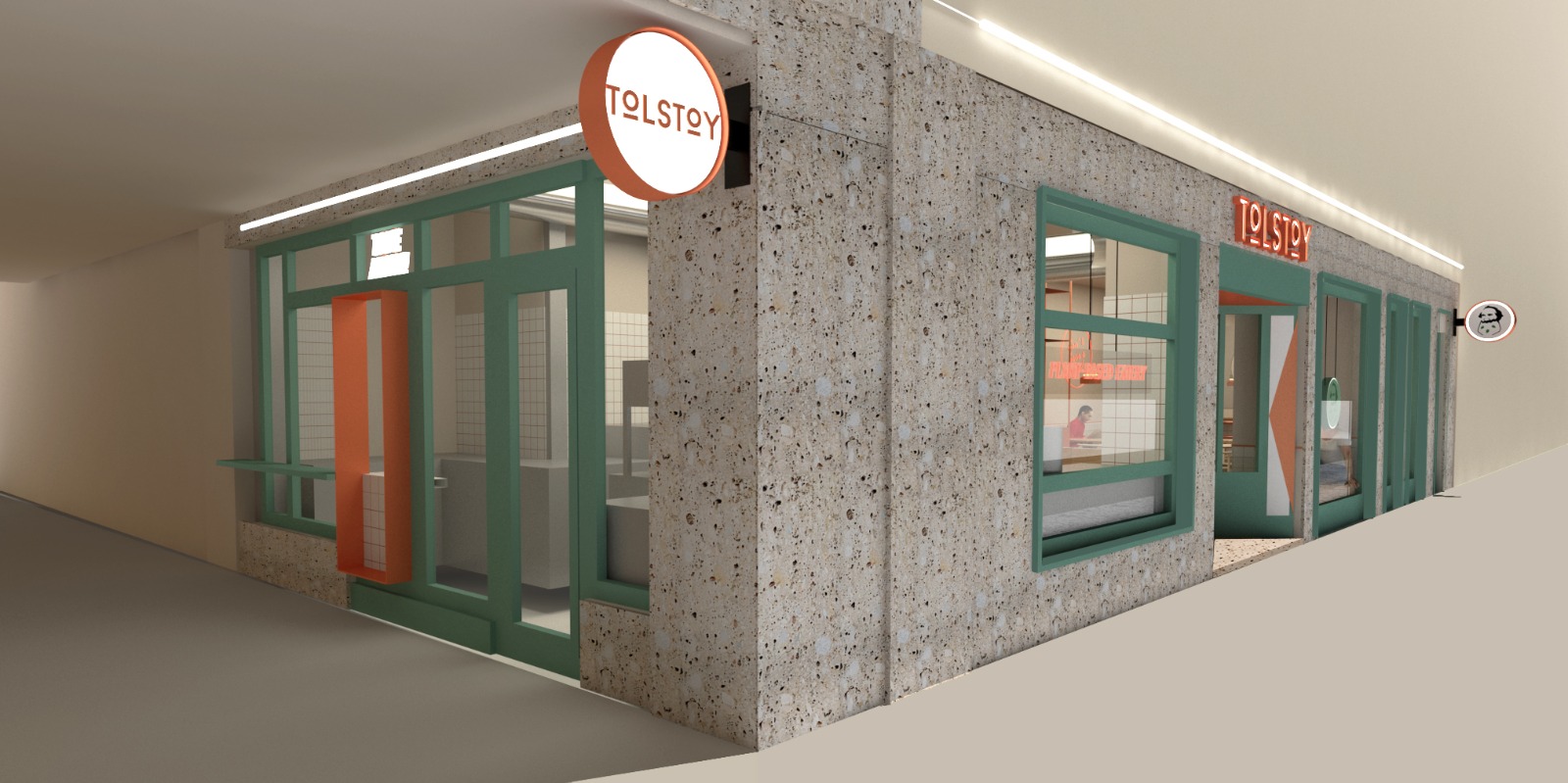
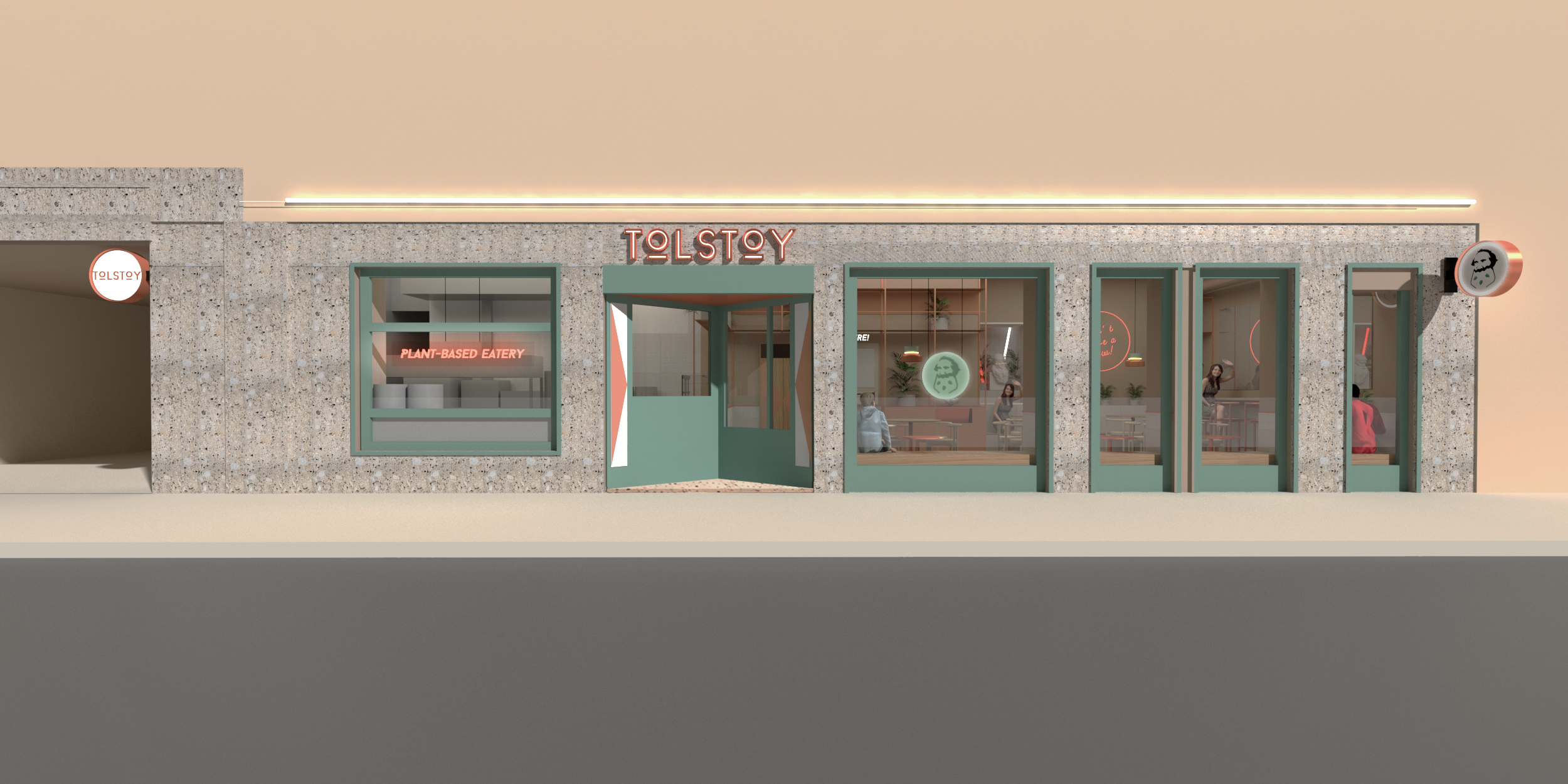

Basically, the facade is thought as a continuation of the interior, bringing outside the same colours and materials, and highlighting the idea of transparency.
How can we create a flexible space, adaptable to different customers’ needs and preferences?
We divided the space in 3 areas:
- Central area– the most social, where people can enjoy more time and space eating together;

- Windows area – perfect for a customer, who wants to relax, enjoy the view outside or lean back on the benches;
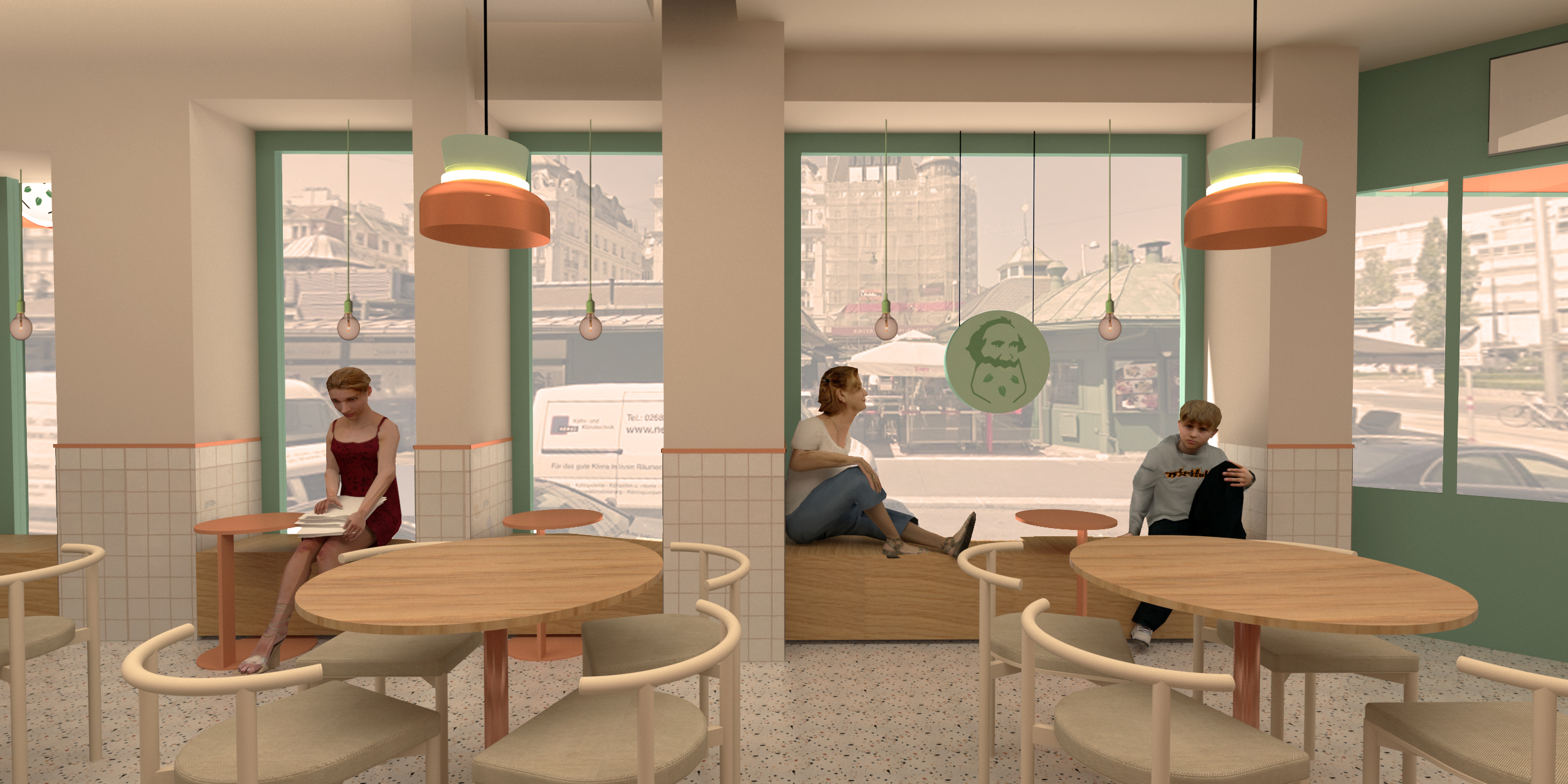
- Mirror area– place for people in a hurry, who just want a quick bite and a coffee.

How can we humanize a digital fast-food space, full of screens and tablets?
Our goal was to embrace Tolstoy digital elements and efficiency by integrating them in a more humane environment:
- We designed a metal cupboard in the eating area to render the space more efficient by integrating all the functions needed for the customer (tray, garbage bin, disposable tableware). But at the same time the self-service stations are also built in the cupboard, making the space more integrated and friendly;
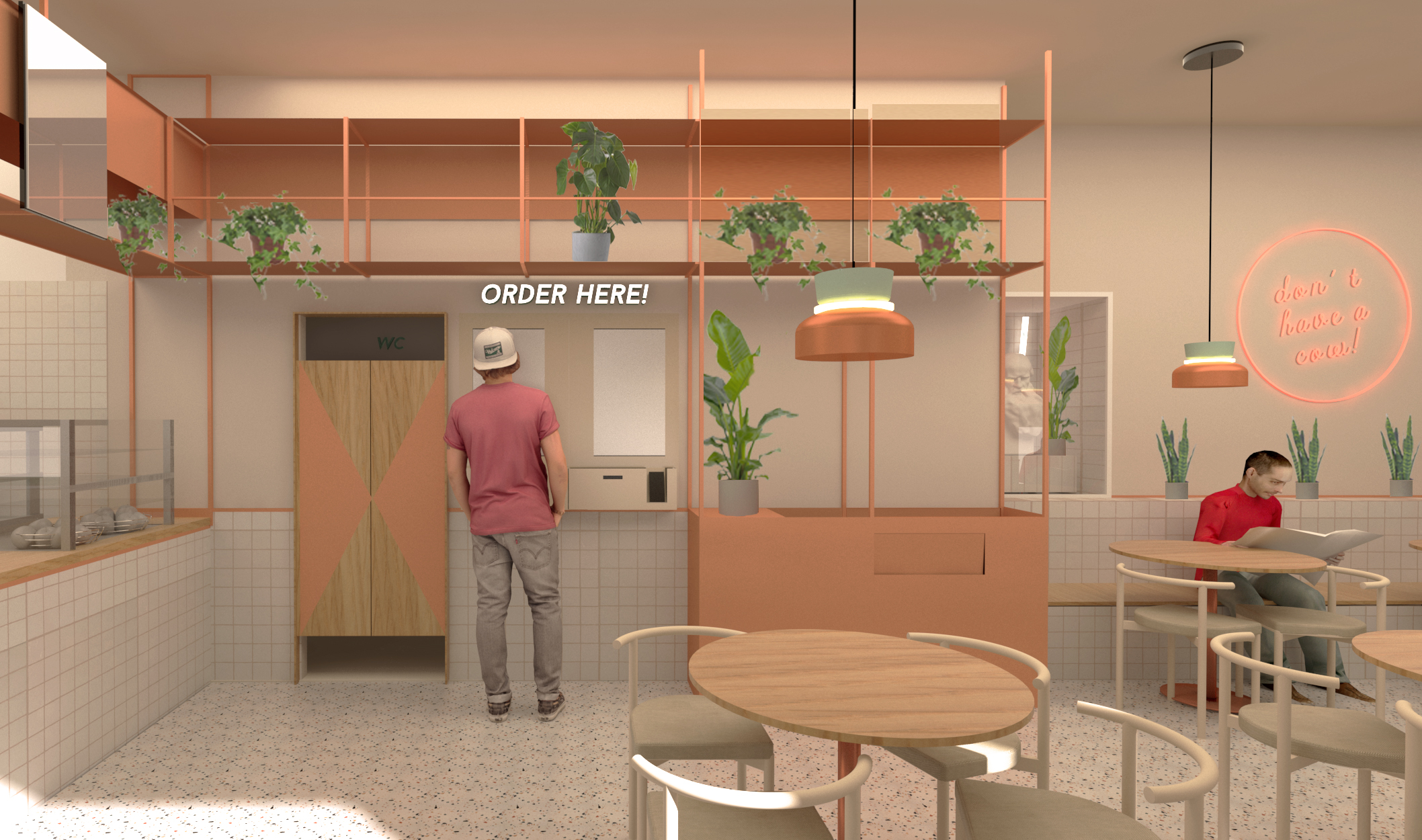
- We designed a counter as an open element between the kitchen and the eating area, making it visible to everyone. It also became a materials hybrid: the lower steel part belongs to the kitchen and the upper wooden part to the customer.
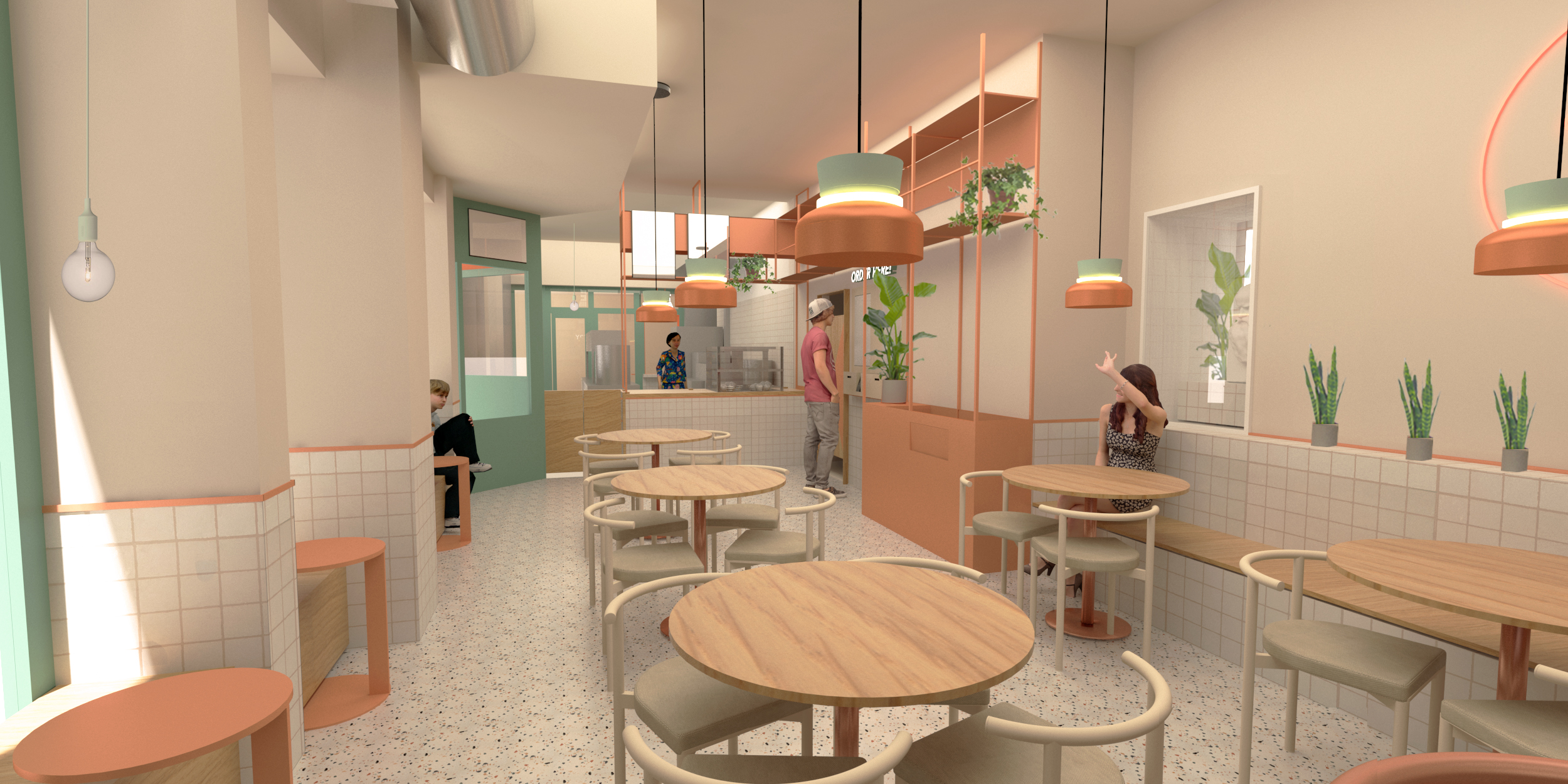
- We designed a memorable decor element – a niche with Leo Tolstoy’s bust. A niche itself was a surprise, discovered by our construction team during the works, and first we thought giving it purely functional purpose (e.g. shelves). But during our trip to Brazil we were influenced by the culture of altars and the way humans can be so devoted to something they believe in. So, we decided to design sort of a “brand alter” for Tolstoy, but with a specific esthetic that came from an internet movement called Vaporwave. This movement brings together old neoclassical sculptures and late 90s web design (human vs digital), which perfectly fits the concept of Tolstoy as a digital plant-based eatery.
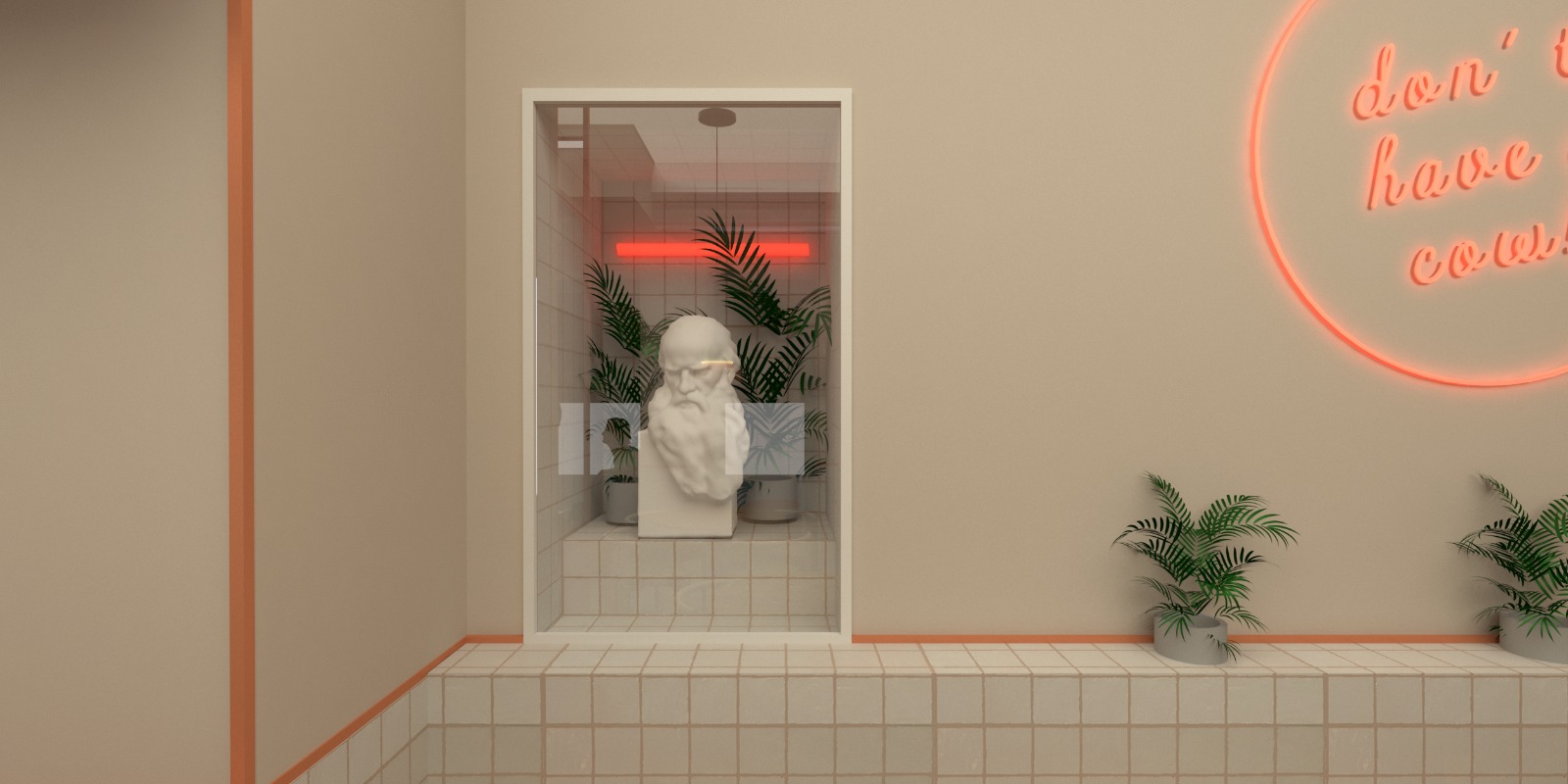
This is the first flagship concept for an urban sit-in and delivery Tolstoy restaurant. In the future we will be working to adapt this to 1) food court version 2) small urban version (no sit-in, take-away and delivery only).
As this concept will be soon put to work in Vienna, we are looking forward to seeing the reaction of our customers and receiving opinions, ideas and criticism from the professional community. Your feedback is very important to us, please reach out to comment!